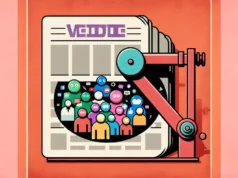As our world continues to race towards an increasingly digital future, the struggle to capture and maintain attention amidst a barrage of distractions is one that echoes across various parts of society. From educators grappling with e-learning platforms to parents combatting screen addiction among children, to marketers figuring ways to make their brands stand out – the quest to ‘capture attention in a world full of distractions’ is indeed a 21st Century conundrum.
This digital explosion, fueled by advancements in technology such as the proliferation of smartphones and the emergence of social media platforms, has given rise to a hyperconnected world. It has created an environment in which the traditional methods of capturing attention are no longer effective. The Report by the International Center for Media & Public Agenda (ICMPA) touches on this subject stating that it has led to a significant shift in the way individuals consume information, process it and react to it.
Research reveals that the human brain can only effectively process a limited amount of information at any one time, a fact that is increasingly coming under pressure in an age where data is instantly accessible. In this digital age, distractions are plentiful, reducing the ability to sustain attention on any one thing for a considerable amount of time. Dr. Adam Gazzaley, a neuroscientist and professor at the University of California, San Francisco, aptly illustrates this point. His research confirms the toll that ‘chronic multitasking’ and the bombardment of digital stimuli take on our ability to focus and engage.
On the flip side, the digital world also provides an opportunity for innovative ways to capture attention. The key lies in leveraging these very platforms that also serve as the source of distractions. Social media, video games, and apps have all shown to be capable of harnessing an individual’s attention.
There is notable success in the gaming industry where builders have mastered the art of capturing and retaining users’ concentration. Epic Games’ popular Fortnite, for instance, boasts over 350 million registered users worldwide and has grown into a multi-billion dollar franchise. Its success lies in the maker’s understanding of how to sustain engagement. Snapchat, too, with its unique blend of short-term content, AR filters, and social connectivity has managed to hold the attention of millions of users by creating a sense of urgency and personalization.
Brands too have cottoned on to these changes and are now crafting marketing strategies based on what holds their consumer’s attention. The use of attention economics, where human attention is seen as a scarce commodity, is now a key driver in shaping business strategies. Short, compelling narratives, the utilization of AR and VR, interactive content, personalization, social media influencers – all are prime examples of how brands are adapting to hold the gaze of their consumers.
Education is also adapting to these changes. With the Covid-19 pandemic prompting a global shift towards online learning, educators are being forced to find new ways to keep student attention. Incorporating interactive teaching methods, gamifying learning, regular live sessions and breakout rooms on platforms like Zoom are all novel strategies being employed.
However, it’s important to remember that capturing attention is not just about inventing new strategies. It’s also about understanding the principles of engagement. As Joan Donovan, Director of Technology and Social Change Research Project at the Shorenstein Center, Harvard Kennedy School, points out, “You have to move from thinking about ‘What can I do to capture attention?’ to ‘How can I create value for people so they choose to give me their attention?’”
So as we navigate these uncharted waters, there is great importance in understanding how to capture attention in a world full of distractions. The key may lie not in a single method, but rather in a collection of approaches carefully tailored to create value and resonate with an individual’s unique needs and preferences.
Sources:
– International Center for Media & Public Agenda (ICMPA). “24/7: How Cell Phones and the Internet Change the Way We Live, Work and Play.” Rowman & Littlefield Publishers, 2007.
– Gazzaley, Adam. “The Distracted Mind: Ancient Brains in a High-Tech World (MIT Press).” MIT Press, 2016.
– Fortnite by the Numbers: How Many People Play Fortnite in 2020?. [online] Influencer Marketing Hub. Available at: https://influencermarketinghub.com/fortnite-player-count/
– Shorenstein Center on Media, Politics and Public Policy at Harvard University. “Disinformation Review.” Harvard Kennedy School, 2020.
– Educause Review. “Capture, Hold, and Retain: Engaging Your Online Students.” Educause Review, 2020.






